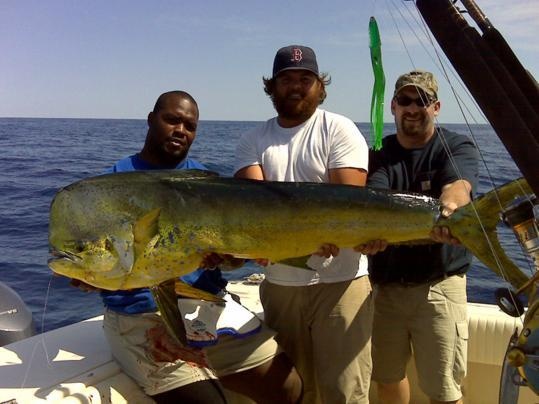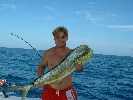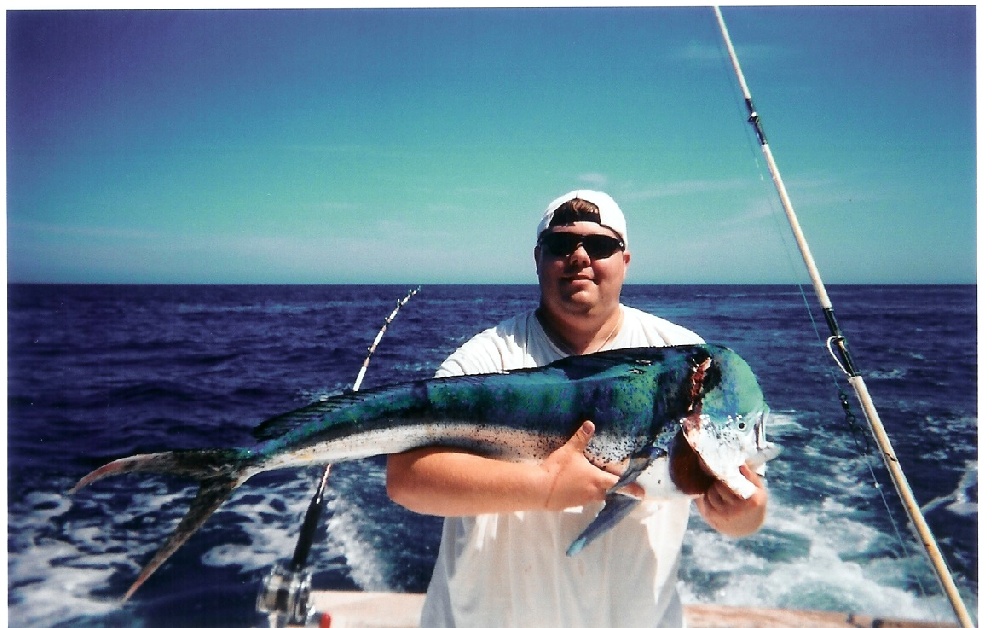Dolphin Fish Details
- Water Type: saltwater
- Latin Name: Coryphaena hippurus
- Common Names: mahi-mahi, dorado maverikos, lampuki
- Water Temp: 72-82 degrees
- World Record: 87 lbs even
- Last Modified By: bassprochuck on 06/05/09 09:15 AM
- Ask about Dolphin Fish in our forum
Photos
Baits and Tackle for Dolphin Fish
Live Bait (Other) Check Prices
- "Greenies" caught on the way to the fishing site.
Dolphin Fish Description
The Mahi-mahi (in Hawaiian), Coryphaena hippurus, also known as common dolphin-fish, dorado maverikos, or lampuki (in Maltese) are surface-dwelling ray-finned fish found in off-shore tropical and subtropical waters worldwide. They are one of only two members of the Coryphaenidae family, the other being the Pompano dolphinfish. The name "mahi-mahi" ("strong-strong" in Hawaiian), particularly used on restaurant menus, has been adopted in recent years to avoid confusing these fish with dolphins, which are mammals.
Mahi-mahi have a lifespan of 4 to 5 years. Catches average 7 to 13 kg (15 to 28 pounds). They seldom exceed 15 kg (33 pounds), and any Mahi-mahi over 18 kg (39 pounds) is exceptional. Mahi-mahi have compressed bodies and long dorsal fins extending almost the entire length of their bodies. Their anal fins are sharply concave. They are distinguished by dazzling colors: golden on the sides, bright blues and greens on the sides and back. Mature males also have prominent foreheads protruding well above the body proper. Females have a rounded head. The males and female have similar shaped bodies except for their heads. Females are usually smaller than the males.
When they are removed from the water, the fish often change between several colors (this being the reason for their name in Spanish Dorado Maverikos), finally fading to a muted yellow-grey upon death.
Mahi-mahi is one of the fastest-growing fish. They are fast swimmers as well, with a top swimming speed of 50 knots. Mahi-mahi spawn in warm ocean currents throughout much of the year, and its young are commonly found in sargassum weed.
Mahi-mahi are carnivorous, feeding on flying fish, crabs, squid, mackerel, and other small fish. They have also been known to eat zooplankton and crustaceans. Mahi-mahi has a chicken-like taste and texture, but some restaurants will substitute a soft flaky white fish instead of real Mahi-mahi because it is cheaper. According to Seafood Watch, imported Mahi-mahi is currently on the list of fish that American consumers, who are sustainability minded, should avoid. Domestic Mahi-mahi, however, is considered acceptable by both Monterey Bay Aquarium and the Blue Ocean Institute. It is recommended to consume the pole- and troll-caught species of this fish, as it limits bycatch of other animals.
(Source: wikipedia)


